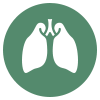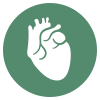What is
the flu?
The flu is an illness caused by a virus called influenza. It spreads between humans as infected people cough or sneeze, releasing infectious virus particles into the air.1
While simple hygiene practices such as covering your mouth nose when sneezing and regularly washing your hands can help to minimize the spread,2 this is not always enough.



The flu causes a range of different symptoms, leaving people feeling very unwell.3,4
Many of these symptoms can also be caused by other illnesses, such as a cold, which can create ‘conflusion’ as you try to figure out if you actually have flu or not.
![]() Check to see if you have the flu using the Symptoms Checker.
Check to see if you have the flu using the Symptoms Checker.
How
many people
does the flu
affect?

![]()
Globally, up to 1 billion cases of the flu are estimated to occur each year.5 Of these, up to 5 million cases are deemed severe, resulting in up to 650,000 deaths.6
Is the flu a
serious illness?
Many people believe that the flu is a minor illness that does not have any serious consequences.7–9 In reality, the flu can cause a wide range of severe, and in some cases potentially life-threatening, complications. These can include:4
 Inflammation of the brain
Inflammation of the brain Blood poisoning (sepsis)
Blood poisoning (sepsis)
 Pneumonia
Pneumonia Worsening of existing health problems, such as asthma
Worsening of existing health problems, such as asthma Inflammation of the heart
Inflammation of the heart Inflammation of the muscle
Inflammation of the muscle Multiple organ failure
Multiple organ failure

In Singapore, influenza results in up to 1500 hospitalizations each year, and as many as 600 influenza-associated deaths.11,12
References
- Cowling B et al. Nat Commun 2013; 4: 1935.
- Centers for Disease Control and Prevention. Preventing the flu. Available from: https://www.cdc.gov/flu/protect/habits/index.htm Last accessed: February 2019.
- Banning M. Br J Nurs 2005; 14(22): 1192–1197.
- Centers for Disease Control and Prevention. Flu Symptoms & Complications, 2018. Available from: https://www.cdc.gov/flu/consumer/symptoms.htm Last accessed: February 2019.
- Krammer F et al. Nat Rev Dis Primers 2018; 4(1): 3. doi: 10.1038/s41572-018-0002-y.
- World Health Organisation. Influenza (Seasonal). Available from: http://www.who.int/news-room/fact-sheets/detail/influenza-(seasonal) Last accessed: February 2019.
- Evans MR et al. Br J Gen Pract. 2007; 57: 352–358.
- Cedraschi C et al. BMC Fam Pract 2013; 14: 15.
- Nowak G et al. Int J Environ Res Public Health 2018; 15(4): 711.
- Centers for Disease Control and Prevention. Estimated Influenza Illnesses, Medical visits, Hospitalizations, and Deaths in the United States — 2017–2018 influenza season. Available from: https://www.cdc.gov/flu/about/burden/2017-2018.htm. Last accessed: February 2019.11. Cowling B et al. Vaccine 2017; 35: 856–864.
- Ang LW, et al. Emerg Infect Dis 2014; 20:1652–60.
- Chow A, et al. Emerg Infect Dis 2006;12:114–21.